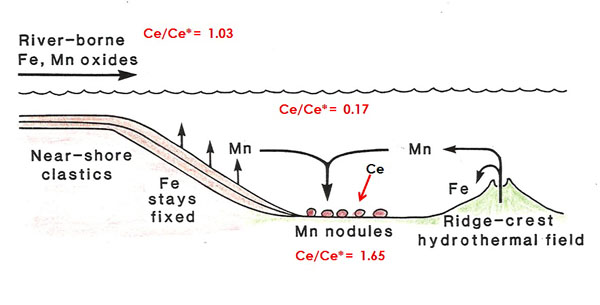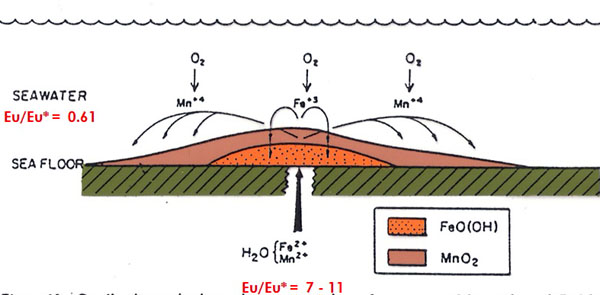Mn Genesis
Manganese ores on the Indian subcontinent tend to be in small deposits, totalling only 15 million tonnes. Among them, however, are a set of very old deposits. As a consequence they provide a valuable record of the history of the early Earth.
Archean manganese deposits differ from their younger conterparts in several ways:
1. They tend to be substantially higher in Fe
2. They are low in Ba, P, Si, and V
3. They have simple REE patterns: Ce/Ce* and Eu/Eu* are close to values for continental crust
The Archean atmosphere-ocean lacked the strong redox gradients that are typical of the younger Earth. As a consequence the efficiency of separation of Mn from Fe was less. For the same reason, REE partitioning did not occur. Ce could not be oxidized by seafloor Mn nodules and mid-ocean ridge vent fluids could not be stripped of their REE by Fe oxide precipitation in deep water, allowing free mixing of vent-derived REE into seawater. These are the two dominant processes producing REE anomalies today. Their absence in the Archean leads to a simpler geochemistry of Mn deposits. By the same token, redox-sensitive elements like Ba and V could not be partitioned and are therefore not enriched in Mn deposits.


Finally organisms were very primitive. No Si or P secreting forms had yet evolved, so enrichment of Mn deposits in these elements had to await the Cambrian radiation of metazoans.